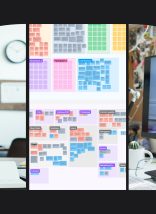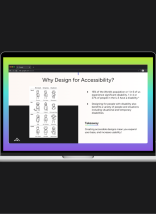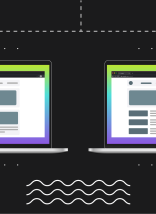In my last post, I wrote about common information architecture problems we see on government websites. Government sites have special challenges, but I’m happy to tell you that there are ways to work out the kinks.
These are some of the approaches we use to clear up information architecture problems. With that said, any problem will have its own specificities that make it hard to present one-size-fits-all solutions.
Techniques: Content Inventory and Content Audit
These two techniques are all about getting a handle on the content on your current site. Information Architect Abby Covert calls this “Identify[ing] the mess.”
Content inventories help you understand where your content stands from a high level perspective. You can grasp how much content you have, what kind of content it is, and where that content exists.
Content audits are much more detailed. They require you to go into the weeds. During a content audit, you have to make decisions about which content you want to keep on a new site and which content can hit the recycle bin. This brings me to something I can’t stress enough: this will be easier if you’re prepared to let go of old things. Bloated content is causing information overload for your users. Leaner content makes it easier to create effective information architecture.
But here’s a warning: you don’t want to go into a content audit without more specific goals. You want to have some ideas about the future of your site so you can make decisions based on those.
Techniques: Card Sorting and Tree Testing
One of the most visible parts of your information architecture is your navigation. Unfortunately, good navigation requires a lot of work. Card sorting and tree testing are important tools for planning navigation. They also help you see how users understand the topics and information on your site.
Card sorting is an exercise to find out the topic groupings that you can create from your content. These groupings are very valuable when you’re setting up your navigation.
Tree testing is the reverse. You won’t ask people to create groupings. Instead, you’ll see if people understand groupings that you have already created. . This is similar to asking people if they can navigate through your site. There’s one key difference, though. Users click through your labels to find where they think certain types of information belong. There is no design or context to help them so they have to navigate based on labels alone. This is a good first step to understanding if users will know how to navigate through your site. Of course on your real site, users will have visual cues to help them. But, the tree test is a check to make sure that the labels and groupings make sense.
Government information architecture problems tend to come from years of growth on a site. Your web presence will always be changing and growing more sophisticated. It’s natural to have to regroup and realign. These techniques can help.
With that in mind, each project is different. The bottom line is to make sure that any website redesign is supported by good information architecture. In turn, that information architecture must be supported by thoughtful, deliberate publishing practices and by understanding the ways that users see your content.









